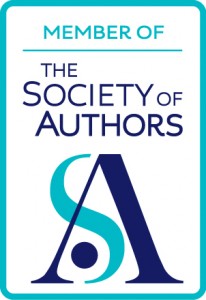 Today’s guest is Cryssa Bazos, one of my fellow authors of Betrayal: Historical Stories. Cryssa is an award-winning historical fiction author and a seventeenth century enthusiast. Her debut novel,Traitor’s Knot, is the Medalist winner of the 2017 New Apple Award for Historical Fiction and a finalist for the 2018 EPIC eBook Awards for Historical Romance. Her second novel,Severed Knot, is a B.R.A.G Medallion Honoree and a finalist for the 2019 Chaucer Award. Today’s guest is Cryssa Bazos, one of my fellow authors of Betrayal: Historical Stories. Cryssa is an award-winning historical fiction author and a seventeenth century enthusiast. Her debut novel,Traitor’s Knot, is the Medalist winner of the 2017 New Apple Award for Historical Fiction and a finalist for the 2018 EPIC eBook Awards for Historical Romance. Her second novel,Severed Knot, is a B.R.A.G Medallion Honoree and a finalist for the 2019 Chaucer Award.
Over to Cryssa to tell you about the advantages of reading anthologies (or collections!)
Since the beginning, ‘anthology’ was used to showcase poetry collections, but over time it expanded to include short fiction. There has been a recent resurgence of anthologies that has followed a trend towards shorter fiction. With social media permeating every aspect of our lives and a general explosion of streaming and online binging, our attention span has understandably shortened. Anthologies are now experiencing a renaissance, thanks to the changing needs of readers. But can they appeal to historical fiction readers?
Size once mattered for historical fiction. It was accepted that it usually took a great many words to build the past credibly. There are histories to weave in, contexts to set, and details of everyday life to showcase. Fans of the genre generally favoured large, plummy tomes, where they can lose themselves for days without surfacing in the present world. Consider favourites like Sara Donati’s Into the Wilderness series, or any of Sharon Kay Penman’s work.
But a collection of historical short fiction can still offer a rich experience. Here are a few considerations to tempt the historical fiction reader to explore the genre through an anthology.
1. Bite-sized stories
Computers and the internet were supposed to make our lives easier and more efficient, but there is so much more vying for our attention. Not everyone has time to read more than an hour here or there, in between appointments and meetings. This is where historical anthologies shine. They offer a taste of the past which can be consumed in one sitting. A reader doesn’t need to make a lengthy commitment as they would to a series or a nine-hundred page novel.
2. Variety
The anthology has the advantage of being able to bring different authors together in one collection. Stories may be connected by theme, as in the case of our new anthology Betrayal where the stories explore treachery and betrayal in its various forms. Stories may also be linked by a historical artefact, like a piece of jewelry, that moves through each story and touches the various characters through the ages. A collection may also explore a single historical event through differing perspectives. Regardless of how the collection is organized, the reader is given an opportunity to thoroughly explore history through various lenses.
3. Discovering a new author
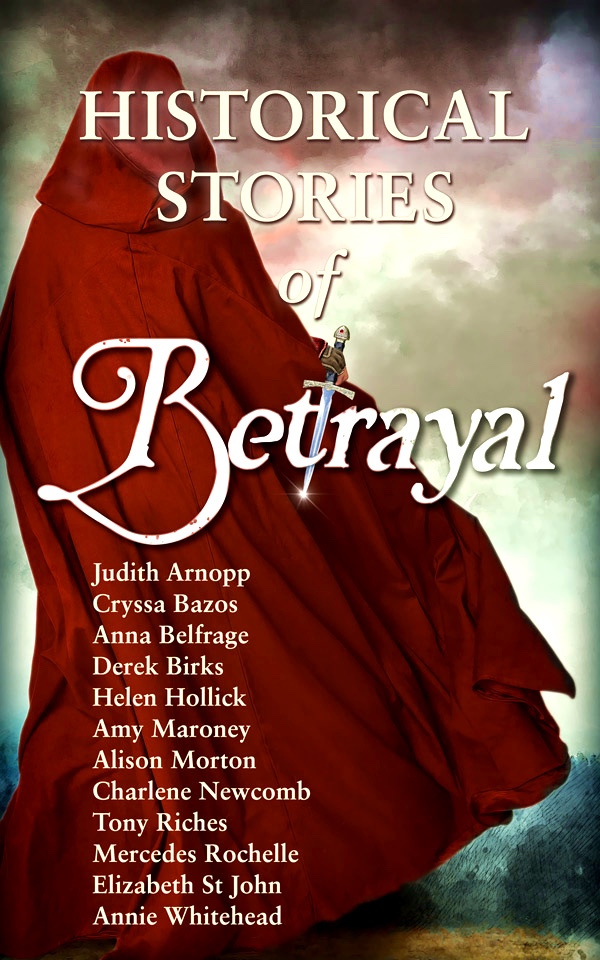 Everyone has their favourite authors, the ones whose work they will auto-buy the moment they learn of a latest release. Sometimes it’s hard to take a chance on a new author particularly for an established series. Anthologies give the reader the opportunity to find a new author with bite sized stories. At times the work can link to an author’s series, but even if it doesn’t, the author’s style may speak to the reader and spark an interest in their work. Everyone has their favourite authors, the ones whose work they will auto-buy the moment they learn of a latest release. Sometimes it’s hard to take a chance on a new author particularly for an established series. Anthologies give the reader the opportunity to find a new author with bite sized stories. At times the work can link to an author’s series, but even if it doesn’t, the author’s style may speak to the reader and spark an interest in their work.
4. Discovering a new era
It’s easy to get rooted to our preferred reading, and anthologies offer an excellent way to test the waters of a new historical era. It’s great way to travel back to a different time and learn more about histories you would otherwise not explore.Historical anthologies may be short fiction in a genre that prizes lengthy stories, but they are hardly lightweights. Instead, they are highly concentrated nuggets to savour and enjoy. There’s no better time than the present to expand your reading and dip into an anthology collection. You may discover a portal to another era, guided by a fresh new author.
Thank you, Cryssa. I loved reading the other eleven stories in Betrayal. And as it’s FREE to download, it’s a win-win gateway into other authors’ work.
Connect with Cryssa
Website: https://cryssabazos.com
Facebook: https://www.facebook.com/cbazos/
Twitter: @CryssaBazos https://twitter.com/CryssaBazos
Instagram: @cryssabazos https://www.instagram.com/cryssabazos/
What’s Traitor’s Knot about?
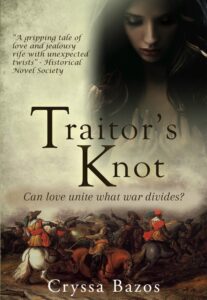 England 1650: Civil War has given way to an uneasy peace in the year since Parliament executed King Charles I. England 1650: Civil War has given way to an uneasy peace in the year since Parliament executed King Charles I.
Royalist officer James Hart refuses to accept the tyranny of the new government, and to raise funds for the restoration of the king’s son, he takes to the road as a highwayman.
Elizabeth Seton has long been shunned for being a traitor’s daughter. In the midst of the new order, she risks her life by sheltering fugitives from Parliament in a garrison town. But her attempts to rebuild her life are threatened, first by her own sense of injustice, then by falling in love with the dashing Hart.
The lovers’ loyalty is tested through war, defeat and separation. James must fight his way back to the woman he loves, while Elizabeth will do anything to save him, even if it means sacrificing herself.
Traitor’s Knot is a sweeping tale of love and conflicted loyalties set against the turmoil of the English Civil War.
Traitor’s Knot is available from Amazon https://mybook.to/TraitorsKnotSevered Knot and from all online retailers https://books2read.com/SeveredKnot
Alison Morton is the author of Roma Nova thrillers – INCEPTIO, CARINA (novella), PERFIDITAS, SUCCESSIO, AURELIA, NEXUS (novella), INSURRECTIO and RETALIO, and ROMA NOVA EXTRA, a collection of short stories. Audiobooks are available for four of the series. Double Identity, a contemporary conspiracy, starts a new series of thrillers.
Find out more about Roma Nova, its origins, stories and heroines and taste world the latest contemporary thriller Double Identity… Download ‘Welcome to Alison Morton’s Thriller Worlds’, a FREE eBook, as a thank you gift when you sign up to Alison’s monthly email newsletter. You’ll also be among the first to know about news and book progress before everybody else, and take part in giveaways.
If you enjoyed this post, do share it with your friends!Like this:Like Loading...
 My guest this week is Charlene Newcomb who lives, works and writes in Kansas. She’s an academic librarian by trade (and recently retired), a U.S. Navy veteran, and has three grown children. When not at the library, she is still surrounded by books, trying to fill her head with all things medieval and galaxies far, far away. Her twelfth century trilogy ‘Battle Scars’ and sci-fi work including the recent ‘Echoes of the Storm’, have found many happy readers. She loves to travel and enjoys quiet places in the mountains or on rocky coasts. But even in Kansas she can let her imagination soar… My guest this week is Charlene Newcomb who lives, works and writes in Kansas. She’s an academic librarian by trade (and recently retired), a U.S. Navy veteran, and has three grown children. When not at the library, she is still surrounded by books, trying to fill her head with all things medieval and galaxies far, far away. Her twelfth century trilogy ‘Battle Scars’ and sci-fi work including the recent ‘Echoes of the Storm’, have found many happy readers. She loves to travel and enjoys quiet places in the mountains or on rocky coasts. But even in Kansas she can let her imagination soar…
Charlene is the driving force behind the new collection by twelve authors of historical stories, ‘Betrayal‘, which is on on 17 November. I am delighted to have contributed ‘The Idealist’.
Over to Charlene!
A memory. A family diary. An event. A scene from another book or dramatic presentation. There are so many ‘moments’ in a writer’s life that may tick off a chain of thoughts that lead to a story.
Looking back, I think there were two main things that stirred my creative juices: the desire to be part of the crew of the Starship Enterprise; and a childhood fascination with King Arthur, Camelot, and the knights of the Round Table. The far off future, and the distant past.
If you know me, you’ll know my first published work and many subsequent short stories were in a science fiction publication. I couldn’t be part of the Star Trek crew, but I could write sci-fi.
But today, I’ll stick with the historical. King Arthur fueled my passion for the past and my interest in researching the facts. I always wanted to know more than the limited information presented in school textbooks, or the shows I saw on television and on the big screen.
I knew I wanted to write historical fiction set during the American Revolution, and with a university degree in U.S. history that seemed perfectly logical. But after an extended break from writing, I became fascinated by Third Crusade history because of an episode of a Robin Hood television series. I headed down the research rabbit hole. Inspired by that show, I wrote the Battle Scars series, a trilogy which takes place during the reign of King Richard, the Lionheart.
I am from the pantser school of writing. My novels evolve as I write, starting with a few bullet points—the ‘beats’ I know I need to hit to get from beginning to end. My first draft is the place where I get to know my main characters. I have identified the basic conflict, what the characters must overcome, and I think I know how they’ll react in a given situation. I don’t know everything about their background, but I add details to my character profiles as I plod through that first draft.
Often there is just a kernel—a line or two—in a novel that opens up possibilities for a character’s backstory. My contribution to the anthology Betrayal was born in the second chapter of Men of the Cross (Battle Scars I), after the young knight Sir Stephan l’Aigle runs into an old friend, another knight named Geoffrey.
“… It was not my fault you lost that chess game.”
Stephan planted a hand on the hilt of his sword. “You abandoned me.” He patted his coin purse. “No coin, no horse, miles from camp, and breaking Richard’s curfew.”
Geoffrey flashed a smile. “You forgot to mention ‘naked.’ Winning the clothes off your back was a delight.”
I admit I laughed out loud when I wrote those lines in Chapter Two, and they still bring a smile to my face. What led to this game of ‘strip chess’? The reader doesn’t get that backstory in the novel, only the insight into a bit of the knights’ history.

After Book III of Battle Scars (Swords of the King) was published, I decided to write a few short stories about turning points in my characters’ lives. The three stories to date are part of a series I call Passages, and Stephan’s was the first one. But I discovered that I couldn’t just write about a chess game. I had to figure out how the development of the relationship between these brothers-in-arms leads to the Stephan the reader meets in my novel.
I hope you will want to learn more about Sir Stephan l’Aigle in this short story prequel to Men of the Cross. You’ll have that opportunity if you read “A Knight’s Tale” in the historical fiction anthology Betrayal.
Thank you, Charlene, for the fascinating trip to another ‘world’.
Connect with Charlene:
Website: charlenenewcomb.com
Facebook: https://www.facebook.com/charsimser
Twitter: https://twitter.com/charnewcomb @charnewcomb
Instagram: https://www.instagram.com/charnewc/ @charnewc
Newsletter: Subscribe-to-my-newsletter
The short story “A Knight’s Tale” is a prequel to the Battle Scars series. Read more about Men of the Cross, For King and Country, and Swords of the King on Char’s website. Or buy the books on Amazon.
Alison Morton is the author of Roma Nova thrillers – INCEPTIO, PERFIDITAS, SUCCESSIO, AURELIA, INSURRECTIO and RETALIO. CARINA, a novella, and ROMA NOVA EXTRA, a collection of short stories, are now available. Audiobooks are available for four of the series. NEXUS, an Aurelia Mitela novella, is now out.
Find out more about Roma Nova, its origins, stories and heroines… Download ‘Welcome to Roma Nova’, a FREE eBook, as a thank you gift when you sign up to Alison’s monthly email newsletter. You’ll also be first to know about Roma Nova news and book progress before everybody else, and take part in giveaways.
If you enjoyed this post, do share it with your friends!Like this:Like Loading...
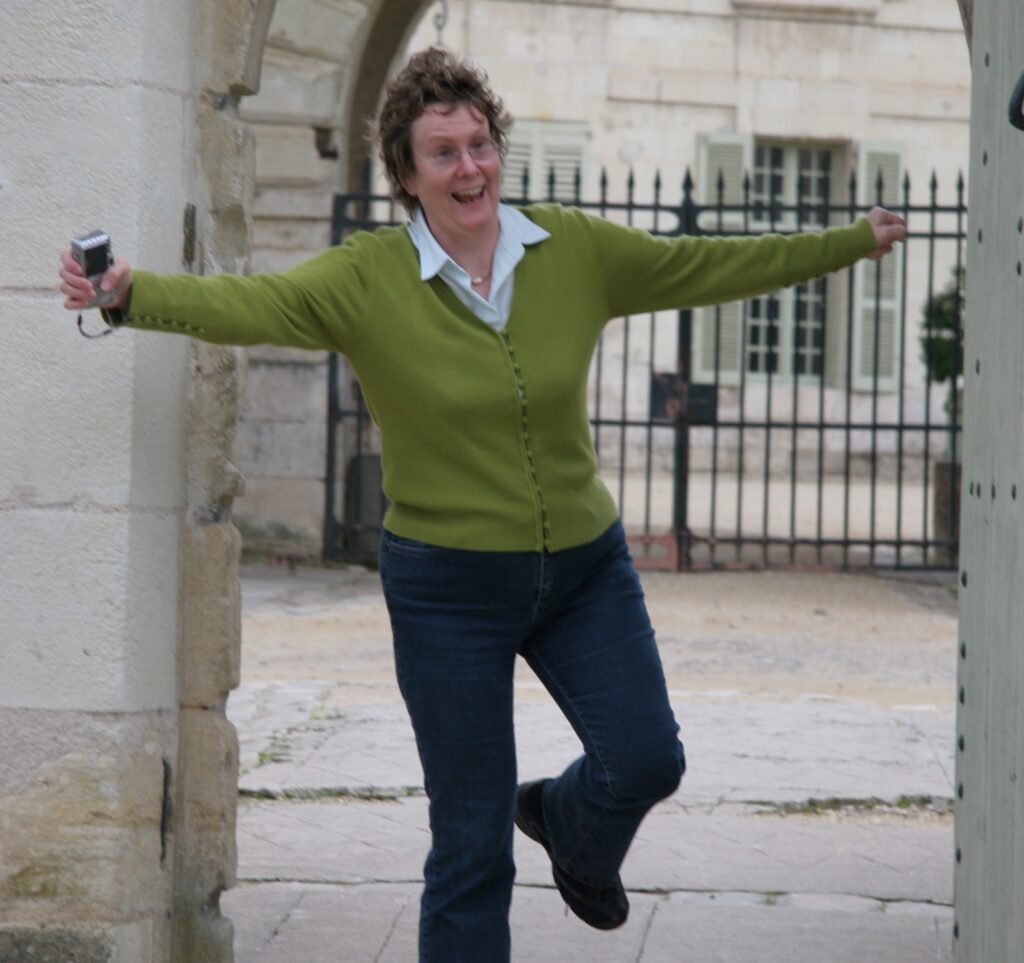 The end. It’s the end of the challenge! The end. It’s the end of the challenge!
Yes, I feel a certain relief, but I’m also energised.
‘Next month’ takes us into the third week in November. I won’t be doing NaNoWriMo when people aim to churn out 50,000 words as I find it too organised, but I will be aiming to get 1,000-1,500 words a day under my belt. At 20,000 words into the new book, I’m getting into the feel of it; the characters have come to life and are running the story. This is a magic moment. (I let them do this for a while, then rein them in when they try to take the whole thing over. 😉 )
So perhaps I’ll be up at 55,000-60,000 words by the end of November and 80-85,000 by the end of the year.
Next month, on 17 November to be precise, my new 12,000-word Roma Nova story in the Betrayal anthology will be published.
And there may be another book surprise on the horizon by then. Who knows?
Thank you so much for following this 30-day writing journey. I hope I’ve made you smile as well as entertained you.
Writing challenges so far:
Day 29: Best accomplishment this month?
Day 28: The saddest writing/reading thing this month
Day 27: What’s your favourite trope?
Day 25 & 26: Favourite books as child and adult
Day 24: What to write next
Day 23: What did you write last?
Day 22: What’s your current word count?
Day 21: My preferred genre
Day 20: Characters’ favourite food (and drink!)
Day 19: Characters’ pastimes
Day 18: Characters’ pet peeves(!)
Days 16 & 17: Favourite outfits (combined)
Day 15: The many-hatted author
Day 14: Show your workplace
Day 13: A funny family story. Or not
Day 12: Early bird or night owl?
Day 11: Favourite writing snacks/chocolate porn
Day 10: Post an old picture of yourself
Day 9: Post 5 random facts about you
Day 8: What’s your writing process?
Day 7: Introduce your ‘author friend’
Day 6: How the writing all began
Day 5: What inspired the book I’m working on
Day 4: The setting for the new Roma Nova book
Day 3: Introducing the main characters Julia and Apulius
Day 2: Introduce your work in progress
Day 1: Starting with revealing information
Alison Morton is the author of Roma Nova thrillers – INCEPTIO, PERFIDITAS, SUCCESSIO, AURELIA, INSURRECTIO and RETALIO. CARINA, a novella, and ROMA NOVA EXTRA, a collection of short stories, are now available. Audiobooks are available for four of the series. NEXUS, an Aurelia Mitela novella, is now out.
Find out more about Roma Nova, its origins, stories and heroines… Download ‘Welcome to Roma Nova’, a FREE eBook, as a thank you gift when you sign up to Alison’s monthly email newsletter. You’ll also be first to know about Roma Nova news and book progress before everybody else, and take part in giveaways.
If you enjoyed this post, do share it with your friends!Like this:Like Loading...
 Hahaha! Actually, it will be finishing this challenge. 😉 Hahaha! Actually, it will be finishing this challenge. 😉
Writing (nearly) daily posts interspersed with posts from some fabulous guests has really exercised my writing muscles. Writing short, hopefully sharp, pieces to a timetable means you gain focus and commitment. Long-form writing like novels can lead to a certain complacency so these blog posts have enabled me to write tighter and quicker.
But strangely, I’ve also increased the word count on my novel-in-progress quite nicely at the same time as well as writing four quite involved guest posts, my monthly newsletter and an article on writing for a local English language magazine.
A collective accomplishment has been the cover reveal of Betrayal and start of marketing campaign in collaboration with the eleven other historical fiction writers.
Overall, it’s got me back into the writing groove after a rather dull and depressing summer in Covid-19 land. I think that’s a good enough accomplishment.
Oh, and I’ve been to the hairdresser again.
Writing challenges so far:
Day 28: The saddest writing/reading thing this month
Day 27: What’s your favourite trope?
Day 25 & 26: Favourite books as child and adult
Day 24: What to write next
Day 23: What did you write last?
Day 22: What’s your current word count?
Day 21: My preferred genre
Day 20: Characters’ favourite food (and drink!)
Day 19: Characters’ pastimes
Day 18: Characters’ pet peeves(!)
Days 16 & 17: Favourite outfits (combined)
Day 15: The many-hatted author
Day 14: Show your workplace
Day 13: A funny family story. Or not
Day 12: Early bird or night owl?
Day 11: Favourite writing snacks/chocolate porn
Day 10: Post an old picture of yourself
Day 9: Post 5 random facts about you
Day 8: What’s your writing process?
Day 7: Introduce your ‘author friend’
Day 6: How the writing all began
Day 5: What inspired the book I’m working on
Day 4: The setting for the new Roma Nova book
Day 3: Introducing the main characters Julia and Apulius
Day 2: Introduce your work in progress
Day 1: Starting with revealing information
If you enjoyed this post, do share it with your friends!Like this:Like Loading...
 My guest this week is Amy Maroney who lives in the Pacific Northwest of the U.S. with her family. She spent many years as a writer and editor of nonfiction before turning her hand to historical fiction. When she’s not diving down research rabbit holes, she enjoys hiking, drawing, dancing, traveling, and reading. She’s the author of the Miramonde series: The Girl from Oto, Mira’s Way, and A Place in the World. Currently, she’s working on a new series set in and around medieval Rhodes, Greece. My guest this week is Amy Maroney who lives in the Pacific Northwest of the U.S. with her family. She spent many years as a writer and editor of nonfiction before turning her hand to historical fiction. When she’s not diving down research rabbit holes, she enjoys hiking, drawing, dancing, traveling, and reading. She’s the author of the Miramonde series: The Girl from Oto, Mira’s Way, and A Place in the World. Currently, she’s working on a new series set in and around medieval Rhodes, Greece.
Amy is one of my fellow authors of Betrayal, 12 historical fiction stories, due out 17 November. Here she shows just how a fascination with an aspect of history can start and from there leads to a successful historical fiction series.
Over to Amy!
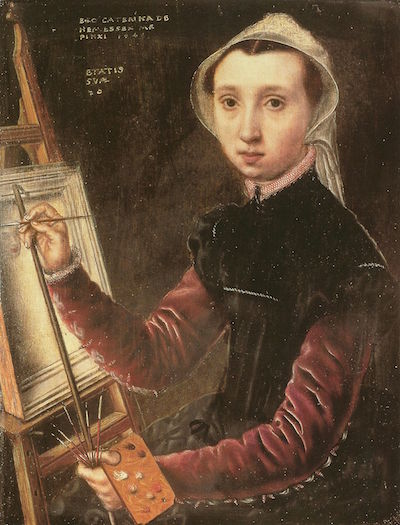 Self-portrait Caterina van Hermessen Nearly a decade ago, in a dimly-lit hallway at Oxford’s Magdalen College, I stumbled across a sixteenth-century portrait of a woman attributed to female artist Caterina Van Hemessen. I was stunned. After visiting many museums full of Renaissance-era portraits and learning about art history as a college student, I had somehow never heard of female old masters. But now, before my own eyes, was evidence that there were women painters in those days. I soon learned that because women’s work wasn’t valued, their paintings were often attributed to men or kept anonymous. I became obsessed with the lost stories of these women—and I wrote a historical mystery series on the topic.
My Miramonde series tells the story of a Renaissance-era woman artist and a modern-day scholar who are linked by a 500-year-old mystery. In Book 1, The Girl from Oto, the heroine of the series is born into a ruthless and violent noble family; her mother names her Miramonde, ‘one who sees the world.’ Raised in a convent, Mira becomes an extraordinary artist—never dreaming she will one day fulfill the promise of her name.
Mira’s modern-day counterpart, Zari Durrell, is a young American scholar doing research in Europe who discovers traces of a mysterious woman artist in several sixteenth-century paintings. Soon she’s following a path through history to Mira herself. But the art world ignores her findings, dazzled by a rival academic’s claim that the portraits were in fact made by a famous male artist.
False attribution to male artists was just one of the obstacles encountered by women artists throughout history. For example, Da Vinci was celebrated for his anatomically precise work. He was famous for his detailed observations of naked bodies. His female contemporaries, on the other hand, were barred from observing nude models. Is it any surprise, then, that women artists of the past were criticized for their inferior figurative work? This lack of opportunity did not stop them from making art, though. Many of them focused on—and excelled at—the still life.
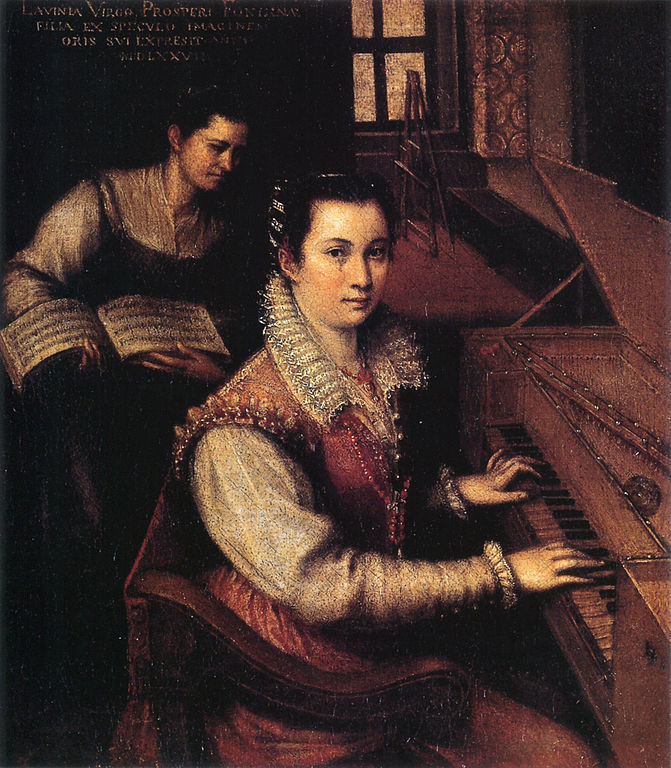 Self-portrait Lavinia Fontana One of the other challenges facing women artists of the past is that they’ve been stuffed into basements and attics, relegated to the dusty archives of Europe’s great museums. Even if museums own work by women, they rarely exhibit it. That’s why the Prado’s show featuring Clara Peeters in 2016 was so groundbreaking. The Prado had never showcased a female artist before, despite its 200-year-old history. It was only after a curator’s wife asked him if there were any paintings in the place by female artists that Flemish artist Peeters’ work was retrieved from the basement. The Peeters exhibit was so successful that in 2019 the Prado hosted another show featuring two female old masters: Sofonisba Anguissola and Lavinia Fontana.
As scholarship about female old masters increases and public interest in these women grows, so does the value of their paintings. Italian old master Artemisia Gentileschi is the shining star in this trend, with her works now commanding millions. A blockbuster exhibition featuring Gentileschi hangs at the National Gallery in London until January 2021. The final book in my Miramonde series begins with a quote from Artemisia herself that speaks for other women artists whose voices languish in the shadows of history: “I will show your illustrious Lordship what a woman can do.”
Brava! What a revealing story.
About Amy’s work
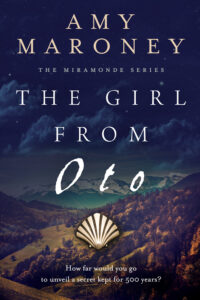 A Renaissance-era female artist and an American scholar. Linked by a 500-year-old mystery… A Renaissance-era female artist and an American scholar. Linked by a 500-year-old mystery…
1500: Born during a time wracked by war and plague, Mira grows up in a Pyrenees convent believing she is an orphan. When tragedy strikes, Mira learns the devastating truth about her own origins. But does she have the strength to face those who would destroy her?
2015: Centuries later, art scholar Zari unearths traces of a mysterious young woman named Mira in two 16th-century portraits. Obsessed, Zari tracks her through the great cities of Europe to the pilgrim’s route of Camino de Santiago – and is stunned by what she finds. Will her discovery be enough to bring Mira’s story to life?
Find The Girl from Oto, the story of a Renaissance-era female artist and the modern-day scholar on her trail, on Amazon and other online stores here.
To receive a free prequel novella to the Miramonde series, join Amy Maroney’s readers’ group at www.amymaroney.com.
Connect with Amy
Follow her on BookBub at https://www.bookbub.com/profile/amy-maroney
Facebook: https://www.facebook.com/amymaroneyauthor/
Twitter: https://twitter.com/wilaroney @wilaroney
Instagram @amymaroneywrites
Alison Morton is the author of Roma Nova thrillers – INCEPTIO, PERFIDITAS, SUCCESSIO, AURELIA, INSURRECTIO and RETALIO. CARINA, a novella, and ROMA NOVA EXTRA, a collection of short stories, are now available. Audiobooks are available for four of the series. NEXUS, an Aurelia Mitela novella, is now out.
Find out more about Roma Nova, its origins, stories and heroines… Download ‘Welcome to Roma Nova’, a FREE eBook, as a thank you gift when you sign up to Alison’s monthly email newsletter. You’ll also be first to know about Roma Nova news and book progress before everybody else, and take part in giveaways.
If you enjoyed this post, do share it with your friends!Like this:Like Loading...
|
Subscribe to Blog via Email
Join 368 other subscribers.
Categories
Archive
|
 Today’s guest is Cryssa Bazos, one of my fellow authors of Betrayal: Historical Stories. Cryssa is an award-winning historical fiction author and a seventeenth century enthusiast. Her debut novel,Traitor’s Knot, is the Medalist winner of the 2017 New Apple Award for Historical Fiction and a finalist for the 2018 EPIC eBook Awards for Historical Romance. Her second novel,Severed Knot, is a B.R.A.G Medallion Honoree and a finalist for the 2019 Chaucer Award.
Today’s guest is Cryssa Bazos, one of my fellow authors of Betrayal: Historical Stories. Cryssa is an award-winning historical fiction author and a seventeenth century enthusiast. Her debut novel,Traitor’s Knot, is the Medalist winner of the 2017 New Apple Award for Historical Fiction and a finalist for the 2018 EPIC eBook Awards for Historical Romance. Her second novel,Severed Knot, is a B.R.A.G Medallion Honoree and a finalist for the 2019 Chaucer Award. Everyone has their favourite authors, the ones whose work they will auto-buy the moment they learn of a latest release. Sometimes it’s hard to take a chance on a new author particularly for an established series. Anthologies give the reader the opportunity to find a new author with bite sized stories. At times the work can link to an author’s series, but even if it doesn’t, the author’s style may speak to the reader and spark an interest in their work.
Everyone has their favourite authors, the ones whose work they will auto-buy the moment they learn of a latest release. Sometimes it’s hard to take a chance on a new author particularly for an established series. Anthologies give the reader the opportunity to find a new author with bite sized stories. At times the work can link to an author’s series, but even if it doesn’t, the author’s style may speak to the reader and spark an interest in their work. England 1650: Civil War has given way to an uneasy peace in the year since Parliament executed King Charles I.
England 1650: Civil War has given way to an uneasy peace in the year since Parliament executed King Charles I.












